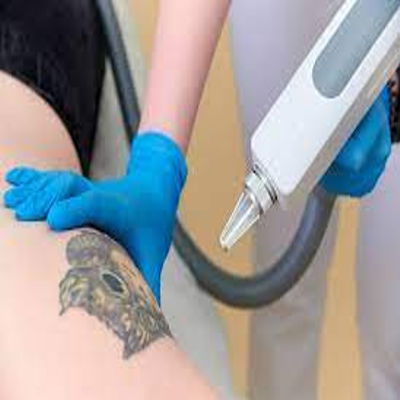The Impact of Tattoo Location on Laser Removal Results
When considering laser tattoo removal, the location of the tattoo plays a significant role in the success and efficiency of the procedure. Factors like skin type, tattoo depth, and ink colors are often discussed, but the placement of the tattoo on the body is equally important. In Muscat, where the demand for Best Laser Tattoo Removal Muscat has been steadily increasing, especially in cities like Muscat, understanding these factors can help individuals make informed decisions. Whether you’re seeking the best laser tattoo removal Muscat has to offer or are simply curious about how location affects removal results, this guide will provide essential insights.

Understanding How Tattoo Location Affects Removal
Blood Circulation and Tattoo Fading
The effectiveness of laser tattoo removal largely depends on blood circulation in the area where the tattoo is located. Areas with better blood flow, such as the chest, arms, and upper back, tend to respond more positively to laser treatments. This is because the increased circulation helps in breaking down the ink particles more efficiently. In contrast, areas with poorer blood circulation, like the lower legs, ankles, and feet, may require more sessions for effective removal.
Skin Thickness and Healing Process
The thickness of the skin in different areas of the body also impacts laser tattoo removal results. Thinner skin areas, such as the inner wrist, neck, and fingers, are more sensitive and may heal differently than thicker skin areas like the upper arms, thighs, and back. This can influence the number of treatments required and the overall outcome. In Muscat, where the climate can be harsh on the skin, post-treatment care is crucial, especially in areas with thinner skin.
Common Tattoo Locations and Their Impact on Removal
Arms and Legs: Frequent Tattoo Locations
Arms and legs are common sites for tattoos, and they typically respond well to laser removal. However, there is a difference between the upper and lower parts of these limbs. For instance, tattoos on the upper arm or thigh usually have better blood circulation and thicker skin, making them easier to remove. On the other hand, tattoos on the lower legs or forearms may require more sessions due to reduced circulation and potential exposure to sun damage, which can complicate the removal process.
Back and Chest: Large Canvas for Tattoos
The back and chest are popular areas for larger, more detailed tattoos. The skin in these regions is generally thicker, and the circulation is better, especially in the upper back and chest areas. This makes the removal process more straightforward. However, due to the size and potential complexity of tattoos in these areas, multiple sessions might still be necessary, particularly if the tattoo covers a large surface area.
Hands, Feet, and Fingers: Challenging Areas
Tattoos on hands, feet, and fingers present unique challenges for laser removal. These areas have less blood flow, thinner skin, and are more prone to scarring and pigment changes. Additionally, because these parts of the body are constantly exposed to the elements and in frequent use, they may heal more slowly, necessitating additional treatments. In Muscat’s hot and sunny climate, extra care is needed to protect these areas post-treatment to avoid complications.
Neck and Face: Sensitive and Visible Locations
The neck and face are highly visible areas where individuals often seek tattoo removal for professional or personal reasons. The skin here is thinner and more delicate, making it sensitive to laser treatments. Despite this, the good blood flow in these areas can aid in quicker healing and more effective ink breakdown. However, due to the sensitivity and visibility of these areas, it’s important to choose an experienced practitioner in Muscat to minimize the risk of scarring or discoloration.
Factors Influencing Removal Success by Location
Ink Density and Depth
Tattoo location often correlates with ink density and depth. Tattoos on areas like the chest, back, and upper arms are often deeper and more detailed, requiring more laser sessions for complete removal. In contrast, tattoos on the wrists or ankles might be smaller but can still be challenging due to their proximity to bone and lower skin density, which can affect the laser’s efficiency.
Sun Exposure and Its Effects
Areas of the body that are frequently exposed to the sun, such as the arms, neck, and face, can be more difficult to treat. Sun exposure can cause the skin to become more sensitive, and tanning can affect the laser’s ability to target the ink effectively. In a sunny region like Muscat, individuals seeking laser tattoo removal should take extra precautions to protect their skin from the sun before and after treatments to ensure the best results.
Post-Treatment Care by Location
The location of the tattoo also affects the post-treatment care required. Areas like the back or chest, which are often covered by clothing, may be easier to protect and care for, while tattoos on the hands, feet, or face require more diligent aftercare to prevent complications such as infection or scarring. Proper care is essential in Muscat’s climate, where heat and sun exposure can hinder the healing process.
Conclusion: Tailoring Laser Tattoo Removal to the Tattoo’s Location
Understanding the impact of tattoo location on laser removal results is crucial for anyone considering the procedure. Each area of the body presents unique challenges and benefits, influencing the number of sessions needed, the potential for scarring, and the overall effectiveness of the treatment. For those seeking the best laser tattoo removal Muscat offers, it’s important to consult with experienced professionals who can tailor the treatment to the specific needs of your tattoo’s location. With the right approach and care, successful tattoo removal is achievable, regardless of where the ink resides on your body.
